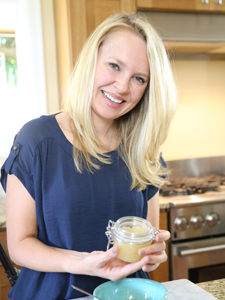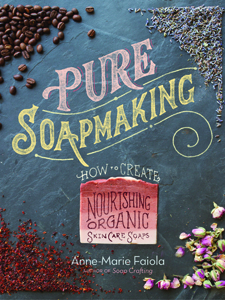Rub-a-Dub-Dub, Tea in the Tub


If you read last week's TeaMuse post, you already know that tea isn't just for sipping anymore. The world's second most popular beverage is becoming increasingly popular as an ingredient in bath and body care products thanks to its numerous benefits for the skin.
According to an article published in The Journal of Clinical and Aesthetic Dermatology in 2009, "the complex polyphenolic compounds in tea provide the same protective effect for the skin as for internal organs." While black and white teas have been shown to offer some benefits for the skin, green tea, which has the highest concentration of tea polyphenols, has antioxidant, anti-inflammatory, and anticarcinogenic properties and has been shown to reduce signs of aging and sun damage, according to another article published in the same journal earlier this year.
Before you dash out to stock up on green tea-infused skincare products, though, a word of caution: just because a product advertises that it contains tea or tea extract does not mean it will have the desired therapeutic effects. The concentration of phenols is not standardized in skincare products, though a concentration of five-percent green tea extract or polyphenols in the 90-percent range is generally considered effective, according to the 2009 article cited above. Furthermore, there are challenges when it comes to topical use of tea due to the stability and skin penetration factors of the polyphenols.
Despite these challenges, tea can be a worthwhile addition to many bath and body products such as soaps, bath salts, and scrubs—especially if you make them yourself or buy them from a reputable retailer.
Anne-Marie Faiola, the CEO and founder of the Washington-based Bramble Berry Soapmaking Supplies company and the blogger behind the Soap Queen blog, says using tea is a great way to naturally color and scent soaps and other body products while reaping the benefits of tea for the skin. Try using a mixture of salt and loose tea to create a soothing bath soak, or add a little oil to the mixture for a rejuvenating salt scrub, suggests Faiola. Her second book, "Pure Soapmaking: How to Create Nourishing Organic Skin Care Soaps," is set to be released in February and contains several recipes featuring tea as an ingredient.
While just about any variety of tea can be used in many bath and body products, the antioxidant properties of green tea make it especially wonderful in leave-on infusions such as massage oils, Faiola adds. Be careful when using herbal tea blends though, she warns, as some ingredients, such as spices like cinnamon, can cause skin irritation.
Michelle Kwiatkowski, owner of the Wild Rose Soap Company based in West Virginia, makes several soaps using different teas and herbal blends. Her green tea jasmine and white tea bergamot soaps, which are artfully topped with tea leaves, are an absolute luxury for tea lovers.
In addition to her tea-infused soaps, Kwiatkowski also sells a lavender hibiscus bath tea—a mixture of dried flowers, herbs, Dead Sea salt, and lavender essential oil—that is "brewed" in the tub as you soak. Do-it-yourselfers who want to make their own bath teas with actual tea can use just about any variety. "Green tea with chamomile would be really soothing," Kwiatkowski suggests.
Tea has benefits for skin when used on its own, too. Try using warm black tea for a relaxing foot soak, for instance. The tannins in the tea help nourish and soften skin and also act as a natural antibacterial agent that prevents foot odor.
Kwiatkowski recommends using warm tea bags as an eye mask to reduce under-eye puffiness and relieve stress. "Take two tea bags of whatever kind of tea you like, get them wet, and then put them over your eyes and relax for five minutes or so," she says. "It's a very easy remedy."
As you can see, there are plenty of ways you can use tea as part of your bath and body care routine. Don't be afraid to experiment with different combinations of your favorite tea blends and other botanical ingredients.
(Photos submitted by Anne-Marie Faiola)